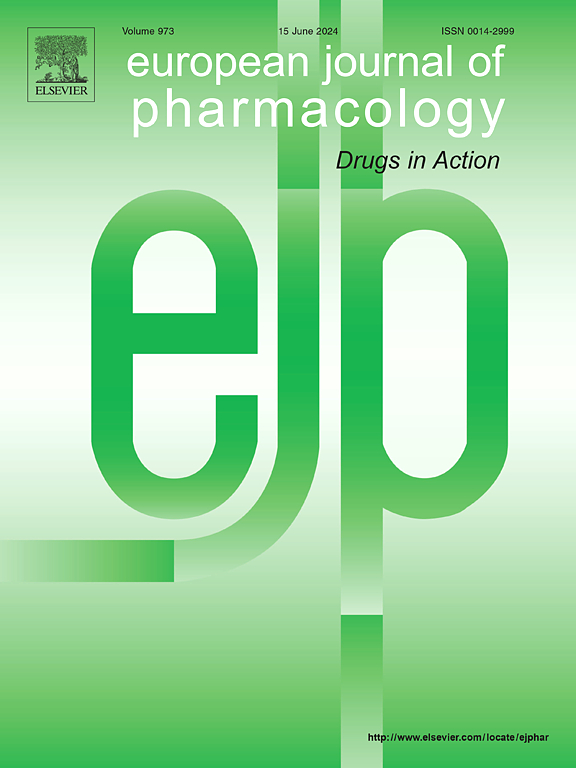Analysis of how melatonin-upregulated clock genes PER2 and CRY2 alleviate rheumatoid arthritis-associated interstitial lung disease
IF 4.2
3区 医学
Q1 PHARMACOLOGY & PHARMACY
引用次数: 0
Abstract
Melatonin (Mel) serves as the central regulator for maintaining circadian rhythms and plays a crucial role not only in controlling the rhythmic clock, but also in several functional domains such as immunomodulation and anti-inflammation. In this study, we explored the clinical relevance of Mel and rheumatoid arthritis comorbid with interstitial lung disease (RA-ILD), and its potential therapeutic effects on arthropathy and pulmonary fibrosis (PF) in mice with collagen-induced arthritis (CIA). The results demonstrated that low serum levels of Mel were correlated with disease activity and severity of PF in RA-ILD patients. In addition, Mel was potentially efficacious in alleviating arthritis, bone destruction, and PF in a mouse model of CIA. Meanwhile, we observed that in lung tissues, the circadian-clock genes (CCGs) period circadian regulator 2 (PER2) and cryptochrome circadian regulator 2 (CRY2) were predominantly expressed in epithelial cells (ECs), and the regulation of their expression in ECs was closely correlated with Mel-mediated suppression of inflammatory responses and a significant reduction in macrophagic inflammatory activity. These results implied that Mel and its associated CCGs might play important regulatory roles in RA-ILD and its associated pathological processes.
分析褪黑激素上调时钟基因 PER2 和 CRY2 如何缓解类风湿性关节炎相关的间质性肺病。
褪黑激素(Melatonin,Mel)是维持昼夜节律的核心调节剂,不仅在控制节律时钟方面发挥着重要作用,而且在免疫调节和抗炎等多个功能领域也发挥着重要作用。在这项研究中,我们探讨了 Mel 与类风湿性关节炎合并间质性肺病(RA-ILD)的临床相关性,以及它对胶原诱导性关节炎(CIA)小鼠关节病和肺纤维化(PF)的潜在治疗作用。结果表明,血清中 Mel 的低水平与 RA-ILD 患者的疾病活动性和肺纤维化的严重程度相关。此外,在 CIA 小鼠模型中,Mel 对缓解关节炎、骨破坏和 PF 有潜在疗效。同时,我们观察到,在肺组织中,昼夜节律钟基因(CCGs)周期昼夜节律调节因子 2(PER2)和隐色素昼夜节律调节因子 2(CRY2)主要在上皮细胞(ECs)中表达,而它们在ECs中的表达调节与Mel介导的炎症反应抑制和巨噬细胞炎症活性的显著降低密切相关。这些结果表明,Mel及其相关CCGs可能在RA-ILD及其相关病理过程中发挥重要的调节作用。
本文章由计算机程序翻译,如有差异,请以英文原文为准。
求助全文
约1分钟内获得全文
求助全文
来源期刊
CiteScore
9.00
自引率
0.00%
发文量
572
审稿时长
34 days
期刊介绍:
The European Journal of Pharmacology publishes research papers covering all aspects of experimental pharmacology with focus on the mechanism of action of structurally identified compounds affecting biological systems.
The scope includes:
Behavioural pharmacology
Neuropharmacology and analgesia
Cardiovascular pharmacology
Pulmonary, gastrointestinal and urogenital pharmacology
Endocrine pharmacology
Immunopharmacology and inflammation
Molecular and cellular pharmacology
Regenerative pharmacology
Biologicals and biotherapeutics
Translational pharmacology
Nutriceutical pharmacology.

 求助内容:
求助内容: 应助结果提醒方式:
应助结果提醒方式:


